Find robust intrinsically safe liquid level sensors for petrochemical, landfill & chemical applications. Submersible IP68 & external mount versions meeting ATEX/IECEx standards.
Intrinsically safe liquid level sensors provide essential measurement capabilities in hazardous areas where flammable gases or dust create an explosion risk. Engineered to limit electrical and thermal energy below ignition thresholds (ATEX/IECEx standards), these sensors are available for external tank mounting or as submersible probes for boreholes and sumps, often featuring high-integrity IP68 sealing. They are crucial for safely monitoring levels of water, fuels, chemicals, and contaminants in demanding applications within the petrochemical, chemical processing, environmental monitoring, and mining industries.
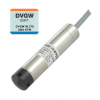 LMP307 Submersible Level Transmitter - Submersible level transmitter for measuring liquid level with a 4-20mA current loop or a 0-10V voltage output plus optional ATEX approval for intrinsically safe use in hazardous areas in ranges from 1mH2O up to 250mH2O. The LMP307 is suitable for use on potable water with no leaching, and can be supplied with a drinking water certificate according to DVGW and KTW.
LMP307 Submersible Level Transmitter - Submersible level transmitter for measuring liquid level with a 4-20mA current loop or a 0-10V voltage output plus optional ATEX approval for intrinsically safe use in hazardous areas in ranges from 1mH2O up to 250mH2O. The LMP307 is suitable for use on potable water with no leaching, and can be supplied with a drinking water certificate according to DVGW and KTW.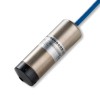 LMK458 Marine Approved Hydrostatic Level Transmitter - Marine approved level transmitter with 4-20mA output for measuring level of contents inside ship ballast, fuel, liquid cargo or wastewater tanks
LMK458 Marine Approved Hydrostatic Level Transmitter - Marine approved level transmitter with 4-20mA output for measuring level of contents inside ship ballast, fuel, liquid cargo or wastewater tanks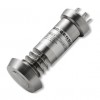 DMP331P Hygienic Flush Pressure Transmitter - Sanitary pressure sensor wth exposed diaphragm with no crevices for high temperatures up to 300 Degrees Celsius in ranges from 100mb up to 40 bar gauge or absolute
DMP331P Hygienic Flush Pressure Transmitter - Sanitary pressure sensor wth exposed diaphragm with no crevices for high temperatures up to 300 Degrees Celsius in ranges from 100mb up to 40 bar gauge or absolute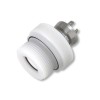 LMK351 High Overpressure Flush Level Transmitter - Flush capacitive ceramic pressure sensor for measuring corrosive and viscous liquid level from levels 0.4 metres of water up to 200 mH2O.
LMK351 High Overpressure Flush Level Transmitter - Flush capacitive ceramic pressure sensor for measuring corrosive and viscous liquid level from levels 0.4 metres of water up to 200 mH2O. 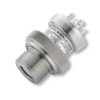 LMK331 Screw-In Ceramic Level Transmitter - Level pressure sensor with semi-flush ceramic diaphragm and stainless steel or PVDF wetted parts in ranges from 0-4 to 600mH2O gauge.
LMK331 Screw-In Ceramic Level Transmitter - Level pressure sensor with semi-flush ceramic diaphragm and stainless steel or PVDF wetted parts in ranges from 0-4 to 600mH2O gauge. DPT200 Pressurised Tank Level Differential Pressure Transmitter - Pressurised tank liquid level differential pressure cell transmitter for process plant storage.
DPT200 Pressurised Tank Level Differential Pressure Transmitter - Pressurised tank liquid level differential pressure cell transmitter for process plant storage.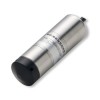 LMK382 Low Range IP68 Waste Water Level Transmitter - Submersible Low Range waste water level transmitter with intrinsically safe option for monitoring the level of sewage and effluent in water treatment plants.
LMK382 Low Range IP68 Waste Water Level Transmitter - Submersible Low Range waste water level transmitter with intrinsically safe option for monitoring the level of sewage and effluent in water treatment plants.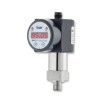 DS200 Combined Hydrostatic Level Switch, Gauge and Sensor - Three in one hydrostatic level switch, digital level gauge and level sensor with level ranges from 1 mWG up to 600 mWG (3.3 to 1969 ftWG).
DS200 Combined Hydrostatic Level Switch, Gauge and Sensor - Three in one hydrostatic level switch, digital level gauge and level sensor with level ranges from 1 mWG up to 600 mWG (3.3 to 1969 ftWG). LMP 308 Removable Waterproof Cable Connection Water Level Sensor - Groundwater, tank & reservoir water level detachable submersible cable hydrostatic liquid level sensor for multiple municipal water level measurement locations.
LMP 308 Removable Waterproof Cable Connection Water Level Sensor - Groundwater, tank & reservoir water level detachable submersible cable hydrostatic liquid level sensor for multiple municipal water level measurement locations.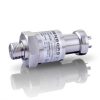 DMK 458 Seawater Low Range Pressure Transmitter - Sea water corrosion resistant low range pressure transmitter for marine, ship and offshore engineering.
DMK 458 Seawater Low Range Pressure Transmitter - Sea water corrosion resistant low range pressure transmitter for marine, ship and offshore engineering. LMK 487 Submersible Ballast Tank and Draught Level Pressure Transmitter - A 22mm diameter titanium body seawater depth and level probe with a 4-20mA output with Lloyds and DNV-GL ship approval, for monitoring the quantity of ballast or the draft of a ship’s hull.
LMK 487 Submersible Ballast Tank and Draught Level Pressure Transmitter - A 22mm diameter titanium body seawater depth and level probe with a 4-20mA output with Lloyds and DNV-GL ship approval, for monitoring the quantity of ballast or the draft of a ship’s hull.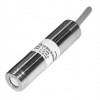 LMK307 Submersible Waste Water Level Sensor - Submersible waste water level sensor with optional intrinsic safety certification for monitoring the level of sewage and effluent in water treatment plants.
LMK307 Submersible Waste Water Level Sensor - Submersible waste water level sensor with optional intrinsic safety certification for monitoring the level of sewage and effluent in water treatment plants.
- Fleet management system submersible 3000mm height petrol tank level ATEX rated pressure sensor
- Retrofitting ship bubbler tank gauging system with 22mm submersible level probe
- Sewage level transmitter for submerging in low depths to 5 psi
- Leachate holding tank submersible level sensor for 5 metre depth
 Hazardous Area Submersible Hydrostatic Liquid Level Sensors - Explore our range of intrinsically safe (IS) submersible hydrostatic level sensors, designed for accurate liquid level measurement in hazardous environments
Hazardous Area Submersible Hydrostatic Liquid Level Sensors - Explore our range of intrinsically safe (IS) submersible hydrostatic level sensors, designed for accurate liquid level measurement in hazardous environments Hazardous Area Externally Fitted Hydrostatic Liquid Level Sensors - Ensure safe and accurate liquid level measurement in hazardous environments with our selection of externally mounted hydrostatic level sensors.
Hazardous Area Externally Fitted Hydrostatic Liquid Level Sensors - Ensure safe and accurate liquid level measurement in hazardous environments with our selection of externally mounted hydrostatic level sensors.
Find out more about Intrinsically Safe Liquid Level Sensors to determine which product options and capabilities will best meet your application requirements.
Intrinsically safe liquid level sensors are specifically engineered for deployment in environments where the potential for ignition exists due to the presence of flammable gases, vapors, or combustible dusts. These sensors operate on the principle of limiting electrical and thermal energy under both normal operation and fault conditions to levels insufficient to ignite the surrounding hazardous atmosphere, adhering to stringent intrinsic safety (IS) protection concepts. Compliance with standards such as ATEX, IECEx, or other regional certifications is paramount, ensuring the sensor design inherently prevents sparks or hot surfaces that could serve as an ignition source in classified hazardous locations like Zone 0, 1, or 2.
The implementation of intrinsic safety necessitates careful system design, involving not only the sensor itself but also its connection via certified IS barriers or isolators located in the safe area. These barriers regulate the energy transferred to the sensor in the hazardous zone. The sensors are designed with specific low-voltage and low-current characteristics, along with considerations for capacitance and inductance, to meet the strict energy limitations required for IS approval. This design constraint influences the types of sensing technologies feasible for IS applications and requires careful selection based on the measurement requirements and environmental conditions.
For applications involving storage tanks containing volatile chemicals, fuels, or solvents within a potentially explosive atmosphere, externally mounted intrinsically safe level sensors provide a crucial measurement solution. These sensors are often designed for ease of installation on tank walls or via existing fittings, minimizing intrusion while providing continuous monitoring. Their IS certification ensures that the measurement process itself does not introduce an ignition risk to the potentially hazardous vapors present above the liquid surface or surrounding the tank installation.
Submersible intrinsically safe level sensors are essential for tasks such as monitoring groundwater levels in contaminated land remediation sites, tracking leachate accumulation within landfill boreholes, or gauging water levels in wells associated with petrochemical facilities or mining operations. The integrity of the cable and its termination is particularly critical in these applications. High-integrity, permanently sealed cable entries, achieving an IP68 rating, are vital not only for preventing liquid ingress and ensuring long-term measurement accuracy but also for maintaining the intrinsic safety protection over the sensor’s operational life, preventing faults that could compromise the energy limitations.
Material compatibility is a key consideration when selecting intrinsically safe level sensors, especially for submersible types or those measuring aggressive chemicals. Housings are typically constructed from robust materials like stainless steel (e.g., 316L) or specialized polymers chosen for their resistance to corrosion and chemical attack from substances ranging from hydrocarbons and solvents to acidic or alkaline solutions found in industrial process tanks or environmental monitoring wells. Ensuring the sensor’s materials can withstand the specific media without degradation is crucial for both measurement reliability and maintaining the physical integrity required for safe operation in hazardous zones.
These sensors are deployed across diverse industrial and environmental monitoring scenarios where safety is non-negotiable. Examples include level monitoring in chemical processing reactors, fuel storage depots, offshore platform service tanks, wastewater treatment digesters generating biogas, pharmaceutical manufacturing vessels, and environmental monitoring boreholes near petrol stations or industrial sites. The ability to reliably measure levels of water, oils, various chemicals, and even viscous media, while adhering to intrinsic safety standards, makes these sensors indispensable tools for process control, inventory management, and environmental protection in hazardous areas.
